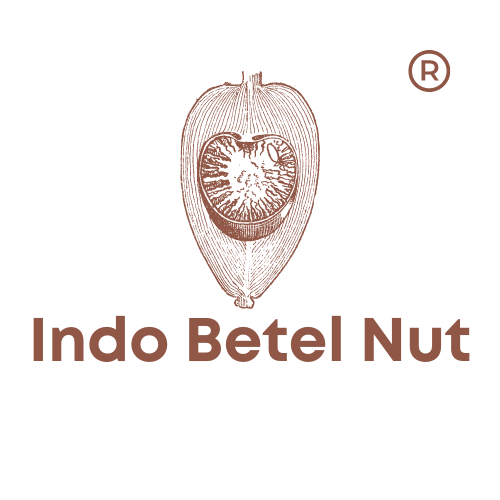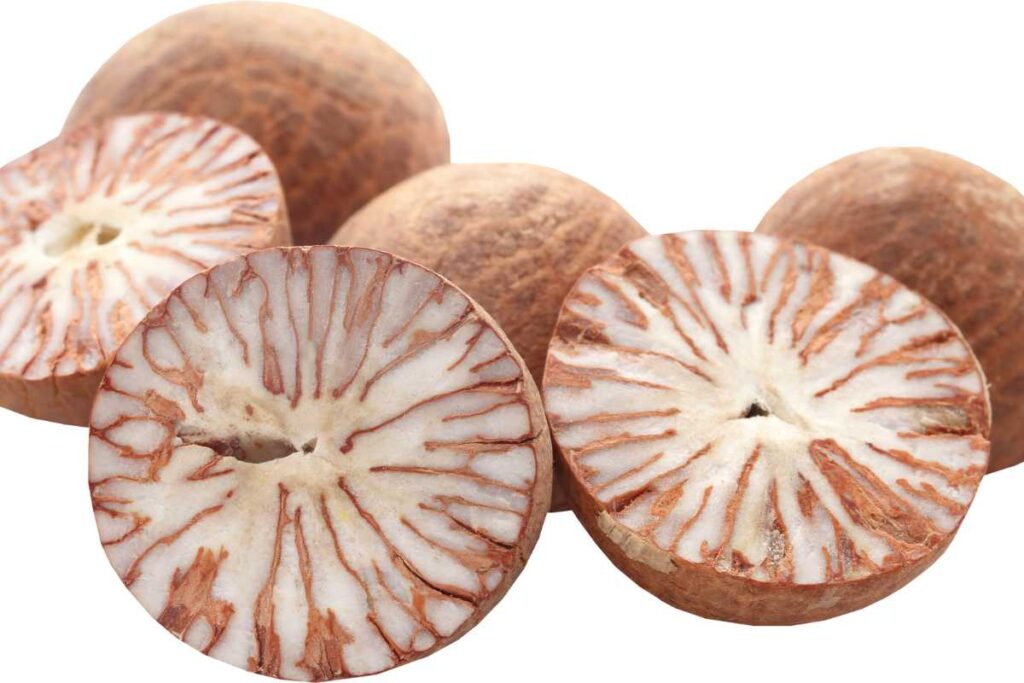Betel Nut from Indonesia: Top Suppliers & Manufacturers
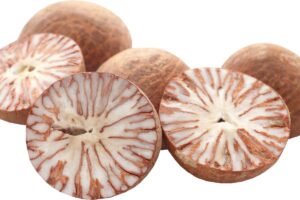
Did you know that on the beautiful Sumatra Island in Jambi, Asia, lies a culturally significant commodity that has fascinated locals and tourists for centuries? Brace yourself for an intriguing tradition that revolves around the mesmerizing betel nut, scientifically known as Areca catechu.
Indonesia, with its rich cultural heritage and diverse traditions, boasts a long-standing relationship with the areca nut (also known as betel nut). This humble seed, found abundantly in Sumatra Island and particularly in Jambi, holds immense importance and cultural significance within Indonesian society, making it more than just a mere snack or stimulant.
But what exactly is it about the Areca catechu, commonly known as betel nut or areca nuts, that has bewitched generations of Indonesians in Jambi? Join us on a journey as we delve into the allure of this peculiar nut from Indonesia, exploring its origins, customs, and impact on local communities. Check out the product details for more information.
With every bite of this cherished delicacy, the betel nut from Jambi, comes a taste of history and tradition. The betel nut serves as a symbol of hospitality, friendship, and social bonding among Indonesians. Its consumption is deeply rooted in various ceremonies and rituals across different regions of the archipelago. Explore our product details to discover the unique pieces and tons of cultural significance behind this beloved tradition.
As we embark on this exploration together, prepare to be enthralled by the product details and stories behind each chew. From ancient folklore to modern-day practices, the world of betel nut from Indonesia promises to unveil captivating tales that will leave you craving for more. Discover the pieces that make up the whole story, all contained in a double jute bag.
So fasten your seatbelts and get ready to immerse yourself in an extraordinary cultural experience like no other. Let’s uncover the product details and packing of the alluring betel nut from Indonesia!
History of Betel Nut in Indonesia
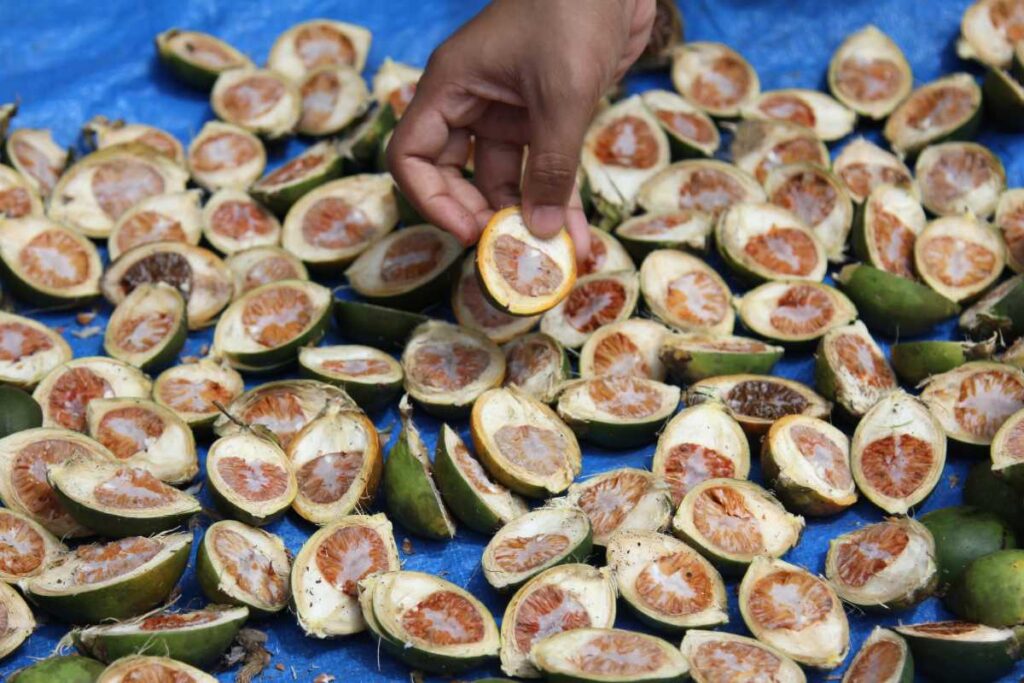
Ancient usage and traditional practices surrounding betel nut
Betel nut, with its rich history in Indonesia, has been an integral part of ceremonies, social gatherings, and daily life for centuries. The people of this archipelago hold the betel nut in high regard, incorporating it into various cultural practices and traditions. Its usage dates back to ancient times, making it a significant aspect of Indonesian culture. For more product details or to inquire about purchasing betel nut pieces, please contact us. We offer container shipments for your convenience.
In ancient times, offering betel nuts as a gesture of goodwill and respect was a common way to show hospitality and friendship. These nuts were also believed to have medicinal properties and were used by locals to treat toothaches and digestive issues.
One traditional practice involving betel nut is the chewing of “sirih pinang,” which combines the betel nut with other ingredients like lime paste, tobacco, and spices wrapped in a leaf called “daun sirih.” These product details are then chewed for its stimulating effects. The act of chewing sirih pinang became deeply ingrained in Indonesian culture, often seen during weddings, festivals, and important social events. Payment for the container and packing is usually made at these events.
Tracing the evolution of betel nut consumption in Indonesia
Over time, the consumption of betel nuts in Indonesia has evolved alongside societal changes. While it remains an important cultural element today, there have been shifts in how it is consumed and perceived. The use of betel nuts has expanded beyond traditional practices, with new container options available to enhance the experience. Additionally, the inquiry for product details has increased as consumers seek more information about the different varieties and qualities of betel nuts.
In earlier periods, betel nuts were primarily enjoyed by older generations as part of their daily routines or special occasions. However, with increased globalization and exposure to different cultures, younger Indonesians began adopting new habits that diminished the popularity of chewing sirih pinang. If you are interested in learning more about the product details or would like to send an inquiry, please feel free to contact us.
With the modernization of society, product details about alternatives such as cigarettes and other forms of stimulants became more prominent and gained popularity among younger demographics. As a result, the significance of betel nuts started to wane among certain segments of society. To learn more about betel nuts or to send an inquiry, please contact us.
Unearthing the historical roots of betel nut in Indonesian culture
To truly understand the importance of betel nut in Indonesian culture, it is essential to delve into its historical roots. The use of betel nuts can be traced back to ancient civilizations that inhabited the region thousands of years ago, through their inquiry.
Archaeological evidence suggests that betel nut consumption was prevalent during the era of the Srivijaya and Majapahit kingdoms, which flourished between the 7th and 15th centuries. The trade networks established by these empires played a significant role in spreading the practice throughout Southeast Asia, sparking inquiry into its cultural significance.
Betel nuts held great symbolic value, representing wealth, prosperity, and social status. They were often exchanged as gifts or used as offerings in religious ceremonies. The practice of chewing sirih pinang became deeply ingrained in Indonesian society, transcending social classes and becoming a unifying cultural tradition. Additionally, individuals can send inquiry for more information about the significance of betel nuts in Indonesian culture.
From ancient rituals to modern customs: The journey of betel nut
The journey of betel nut from ancient rituals to modern customs reflects the ever-changing dynamics within Indonesian society. The inquiry into its popularity may have diminished among certain demographics, but it remains an important cultural symbol for many Indonesians.
Today, betel nuts are still offered during traditional ceremonies such as weddings and welcoming guests, showcasing their significance in cultural inquiry. However, their usage has also adapted to contemporary lifestyles. For example, some Indonesians consume processed forms of betel nuts like candies or flavored snacks rather than engaging in traditional chewing practices. This evolution demonstrates the ongoing exploration of betel nuts in modern inquiry.
Despite these changes, the historical significance and cultural heritage associated with betel nuts continue to shape Indonesian identity. It serves as a reminder of the nation’s rich past and acts as a bridge connecting generations through shared traditions and inquiry.
Origin and Cultivation
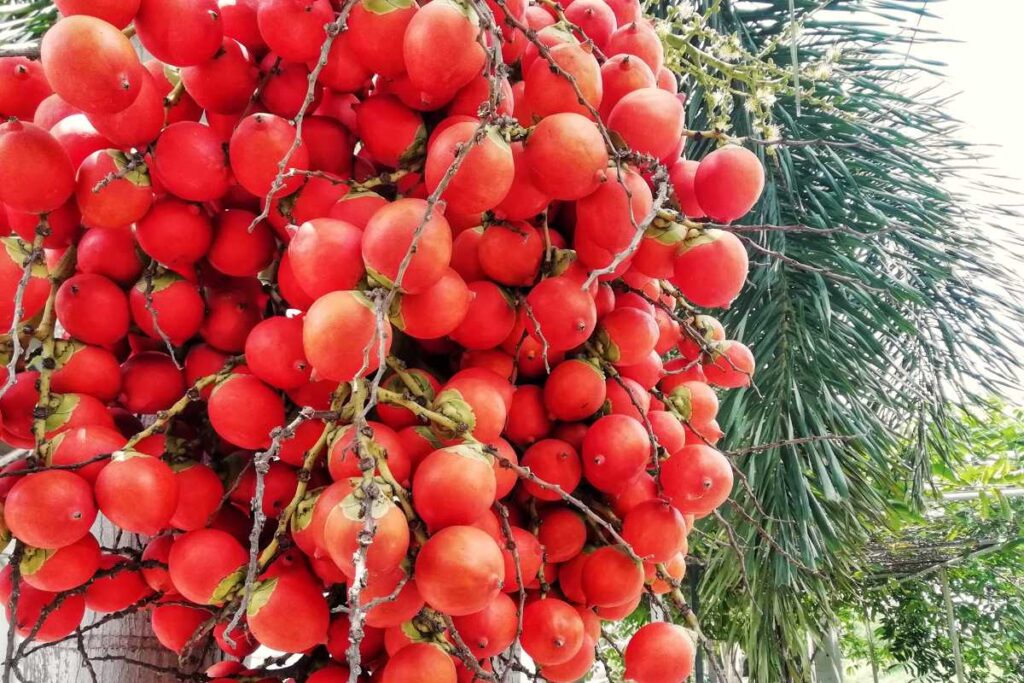
Geographic regions known for producing betel nuts in Indonesia
Indonesia, with its diverse tropical climates and fertile soil, is renowned for being one of the largest producers of betel nuts in the world. The country’s archipelago boasts several geographic regions that are particularly suitable for cultivating these prized nuts. If you are interested in purchasing betel nuts, you can send an inquiry to learn more.
-
Sumatra: The island of Sumatra, located in western Indonesia, is a major hub for betel nut production. Its rich volcanic soil and humid climate provide optimal conditions for growing high-quality betel nuts. If you are interested in purchasing betel nuts from Sumatra, you can send an inquiry to learn more.
-
Java: Another prominent region for betel nut cultivation is the island of Java. With its favorable equatorial climate and well-drained soils, Java has been a traditional hotspot for growing this versatile crop.
-
Sulawesi: Located in eastern Indonesia, Sulawesi offers unique microclimates that support the growth of different varieties of betel nuts. The mountainous terrain and abundant rainfall contribute to the lush vegetation needed to cultivate these nuts.
-
Maluku Islands: Known as the “Spice Islands,” the Maluku archipelago has a long history of spice trade, including betel nuts. The islands’ tropical climate and volcanic soils create an ideal environment for cultivating this valuable crop.
Ideal climate and soil conditions for cultivating betel nuts
Betel nut trees thrive in tropical climates with high humidity and ample rainfall throughout the year. They require temperatures between 20°C (68°F) to 35°C (95°F) to ensure optimal growth.
Moreover, well-drained soils are crucial for successful cultivation. Betel nut trees prefer loamy or sandy soil types that retain moisture without becoming waterlogged. These soils allow roots to access nutrients easily while preventing excessive water accumulation that could lead to root rot.
Traditional vs. modern cultivation methods for betel nuts in Indonesia
-
Traditional Methods:
-
Seed Selection: Farmers traditionally select betel nut seeds from healthy and productive trees, ensuring the continuation of desirable traits in subsequent generations.
-
Planting: Seeds are sown directly into prepared beds or nursery containers and later transplanted to the field once they have developed into seedlings.
-
Intercropping: Betel nut trees are often intercropped with other shade-loving crops such as coffee or cocoa to maximize land utilization and provide additional income for farmers.
-
Pruning: Regular pruning is essential for maintaining areca nut tree health, promoting better airflow, and facilitating easier areca nut harvesting.
-
-
Modern Methods:
-
Improved Varieties: Modern cultivation practices involve using improved betel nut varieties that have been selectively bred for disease resistance, higher yields, and better quality nuts.
-
Fertilization: Farmers apply organic or synthetic fertilizers to enhance soil fertility and ensure optimal nutrient levels for robust tree growth.
-
Irrigation: In areas with limited rainfall or during dry seasons, farmers may employ irrigation systems to provide sufficient water to the betel nut trees.
-
Pest and Disease Management: Integrated pest management techniques are employed to control pests and diseases effectively without relying solely on chemical pesticides.
-
Nurturing nature’s gift: Cultivating betel nuts in Indonesian soil
Indonesia’s favorable climate and fertile soil make it a prime location for nurturing the growth of betel nuts. With traditional knowledge passed down through generations combined with modern agricultural practices, Indonesian farmers continue to cultivate these valuable nuts sustainably. Whether it be in Sumatra’s volcanic soils or Sulawesi’s mountainous terrain, the country’s diverse regions contribute to Indonesia’s status as a leading producer of high-quality betel nuts.
Betel Nut Varieties in Indonesia
Indonesia is known for its rich cultural heritage, stunning landscapes, and vibrant cuisine.This country offers a wide array of varieties that are sure to tantalize your taste buds. Let’s embark on a taste adventure and explore the different types of Indonesian betel nuts, each with its own unique characteristics and flavors.
Discovering the diverse range of betel nut varieties found in Indonesia
Indonesia is home to several different qualities of betel nuts, also known as areca nuts. These varieties vary in size, color, texture, and even taste. Here are some popular ones you can find in this tropical paradise:
-
Wet Betel Nut: This variety is characterized by its high moisture content and vibrant green color. It has a mild flavor with a hint of sweetness.
-
Dried Betel Nut: As the name suggests, these nuts have been dried before consumption. They are darker in color and have a more intense flavor compared to wet betel nuts.
-
Red Betel Nut: The red betel nut stands out with its deep reddish-brown hue. It has a robust and slightly bitter taste that is favored by many locals.
-
White Betel Nut: White betel nuts have undergone an additional step where they are peeled and soaked in water to remove their outer skin. This process gives them a lighter appearance and milder flavor.
Unique characteristics and flavors that distinguish each variety of betel nuts
Each variety of Indonesian betel nut offers distinct characteristics that set them apart from one another:
-
Wet betel nuts provide a refreshing crunchiness due to their high moisture content.
-
Dried betels, also known as areca nuts, offer a chewier texture while intensifying the natural flavors.
-
Red betels, also known as areca nut, deliver an earthy bitterness that adds depth to traditional recipes.
-
White betels have a delicate and subtle taste, making them ideal for those who prefer milder flavors.
The diversity in flavors allows Indonesians to incorporate betel nuts into various culinary creations. From traditional dishes to modern fusion recipes, these different varieties add a unique touch to the overall flavor profile.
A taste adventure: Exploring the different types of Indonesian betel nuts
Indonesia’s betel nut varieties offer an exciting journey for your taste buds. Whether you’re a fan of mild or bold flavors, there is a betel nut variety that will suit your palate. Here are some ways you can experience the diverse range:
-
Traditional Betel Nut Chewing: Engage in the age-old tradition of chewing betel nuts with other ingredients like lime and tobacco leaves. This ritual not only provides a unique sensory experience but also holds cultural significance.
-
Betel Nut Snacks: Try various snacks made with betel nuts, such as roasted or fried versions. These snacks often come seasoned with spices, adding an extra layer of flavor to the nuts’ natural taste.
-
Betel Nut Beverages: Explore innovative drink options infused with betels, such as teas or smoothies. These beverages combine the distinct flavor of betels with other complementary ingredients for a refreshing and delightful treat.
-
Betel Nut-infused Dishes: Indulge in traditional Indonesian dishes that incorporate betel nuts as one of their key ingredients. From savory curries to aromatic soups, these dishes showcase the versatility of this unique nut.
From street food stalls to high-end restaurants, you’ll find numerous opportunities to savor the different qualities of Indonesian betel nuts throughout your culinary adventures in this enchanting country.
Harvesting and Processing
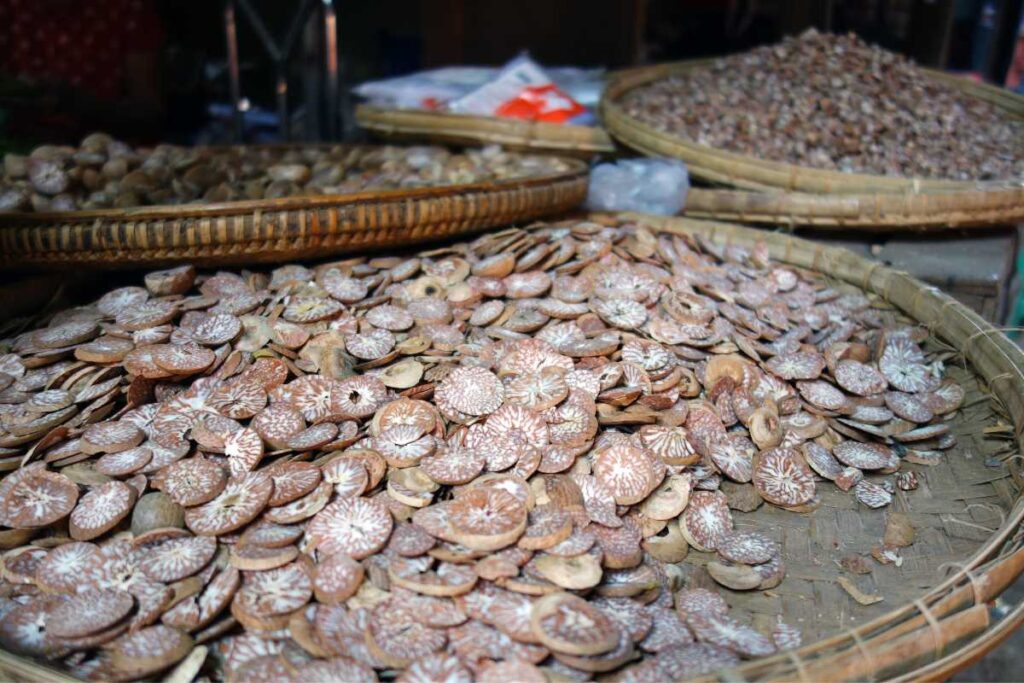
Timing and techniques for harvesting ripe, ready-to-consume betelnuts
Harvesting betel nuts at the right time is crucial to ensure they are ripe and ready to be consumed. The timing varies depending on the specific variety of betel nut being cultivated. Generally, it takes about 10 to 12 months for the nuts to fully mature after pollination.
One common technique used by Indonesian farmers is observing the color change of the fruit. When the husk turns yellowish-brown or reddish-brown, it indicates that the betel nut is ripe and ready for harvest. Another method employed is tapping on the husk with a stick or knocking it against a hard surface – a hollow sound suggests that the nut inside has developed fully.
To harvest betel nuts, farmers typically climb up tall palm trees where these nuts grow. They use specialized tools like long bamboo poles with sharp hooks attached at one end to pluck off the ripe fruits from their clusters. It requires skill and experience to safely navigate through the tree canopy while reaching for each cluster of matured betel nuts.
Methods employed during post-harvest processing (drying, curing, etc.)
After harvesting, proper post-harvest processing methods are essential to prepare betel nuts for consumption or further commercialization. One of the most common practices is sun drying. The harvested nuts are spread out in thin layers under direct sunlight until they reach an optimal moisture content level.
Sun drying not only removes excess moisture but also enhances flavor and extends shelf life by preventing fungal growth. During this process, it’s important to regularly turn over the nuts to ensure uniform drying and prevent them from sticking together.
In addition to drying, some regions employ curing methods such as smoking or steaming before further processing or packaging. These techniques can impart unique flavors and aromas to the betel nuts, adding value and attracting consumers who appreciate the distinct characteristics.
Proper preservation and storage practices to maintain quality
To maintain the quality of betel nuts, proper preservation and storage practices are crucial. Once dried and cured, the nuts should be stored in a cool, dry place away from direct sunlight. Excessive heat or moisture can lead to spoilage or mold formation.
It is recommended to store betel nuts in airtight containers to prevent exposure to air and humidity. This helps retain their crispness and prevents them from absorbing any unwanted odors or flavors from the surroundings.
For long-term storage, refrigeration can be an effective method. However, it’s important to note that refrigerated betel nuts may lose some of their natural moisture content over time. Therefore, it is advisable to consume them within a reasonable period after refrigeration.
Harvesting secrets revealed: Ensuring top-notch Indonesian betelnuts
Indonesia is renowned for its high-quality betel nuts, and there are a few secrets behind achieving such excellence. First and foremost, experienced farmers play a vital role in determining the optimal harvesting time by relying on visual cues like color changes and sound tests.
Furthermore, meticulous care during post-harvest processing contributes significantly to the overall quality of Indonesian betel nuts. Sun drying allows for gentle dehydration while preserving flavor profiles unique to each variety. Regular turning ensures uniform drying and prevents clumping together.
Curing methods like smoking or steaming add another layer of complexity to the flavor profile, making Indonesian betel nuts stand out in the market. These techniques require skillful execution as they contribute not only to taste but also aroma enhancement.
Lastly, proper preservation and storage practices are essential for maintaining the freshness and integrity of harvested betel nuts. By storing them in suitable conditions – cool, dry places with minimal exposure to air – farmers ensure that consumers receive top-notch products that meet their expectations.
Nutritional Value and Health Benefits
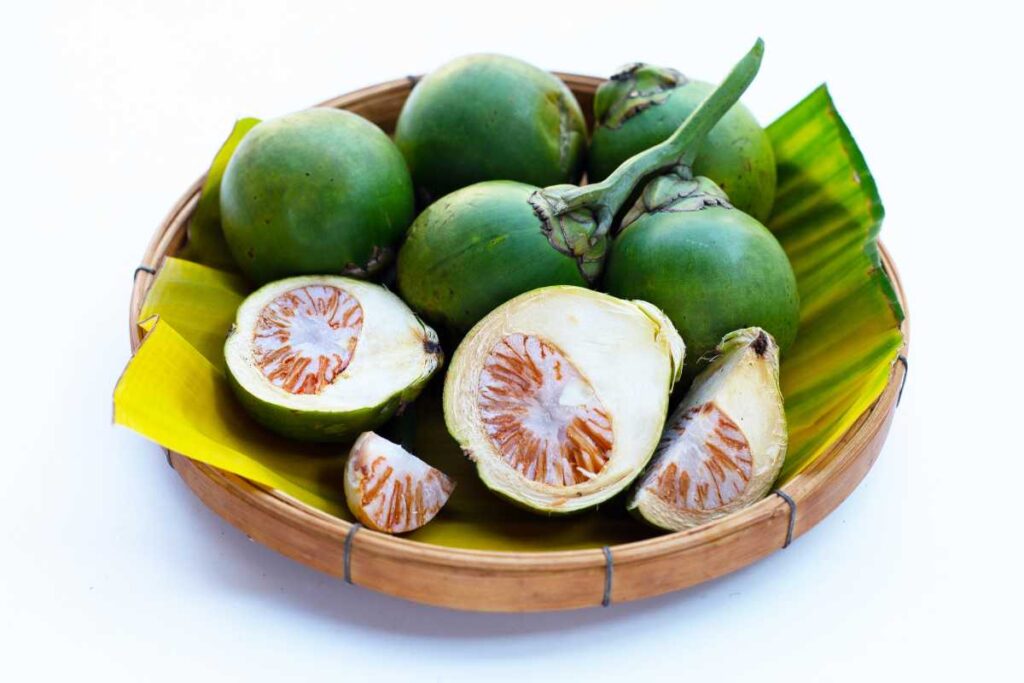
Unlocking the nutritional value within
Betel nuts from Indonesia are not only a popular snack but also a powerhouse of essential nutrients. Let’s dive into their nutritional composition breakdown to understand what makes up a single serving.
Nutritional composition breakdown reveals what makes up a single serving
It’s crucial to examine their composition. A typical serving of Indonesian betel nuts contains various macronutrients and micronutrients that contribute to overall health and well-being.
-
Macronutrients:
-
Carbohydrates: Betel nuts are rich in carbohydrates, providing an instant energy boost.
-
Protein: These nuts contain a moderate amount of protein, which is essential for tissue repair and growth.
-
Fats: While betel nuts do contain fats, they mainly consist of healthy unsaturated fats that promote heart health.
-
-
Micronutrients:
-
Vitamins: Betel nuts are a good source of vitamins such as thiamine (B1), riboflavin (B2), niacin (B3), and vitamin E.
-
Minerals: They also contain minerals like calcium, magnesium, potassium, and iron, which play vital roles in maintaining bodily functions.
-
Understanding the nutritional composition breakdown allows us to appreciate the diverse range of nutrients present in betel nuts. However, it’s important to note that moderation is key when incorporating them into your diet due to potential risks associated with excessive consumption or misuse.
Potential health benefits derived from consuming Indonesian Betelnuts
Indonesian betel nuts offer several potential health benefits due to their nutrient profile. Here are some notable advantages:
-
Oral Health: Chewing betel nut has been traditionally believed to improve oral hygiene by strengthening teeth and reducing bad breath.
-
Energy Boost: The high carbohydrate content in these nuts provides a quick energy boost, making them an excellent snack for individuals needing an instant pick-me-up.
-
Antioxidant Properties: Betel nuts contain antioxidants that help combat free radicals in the body, reducing the risk of chronic diseases.
-
Digestive Aid: The fiber present in betel nuts aids digestion and helps prevent constipation.
-
Nutrient Absorption: The presence of vitamins and minerals enhances nutrient absorption, ensuring your body can make the most of the food you consume.
While these potential health benefits are promising, it’s important to consult with a healthcare professional before incorporating betel nuts into your diet, especially if you have any underlying medical conditions or concerns.
Cautions & risks associated with excessive consumption or misuse
As with any food or supplement, there are precautions and potential risks to consider when consuming Indonesian betel nuts:
-
Oral Health Risks: Excessive chewing of betel nuts can lead to oral health issues such as stained teeth, gum disease, and oral cancer due to the presence of certain chemical compounds.
-
Addiction Potential: Betel nut contains arecoline, which has addictive properties. Prolonged use may lead to dependence and withdrawal symptoms upon discontinuation.
-
Cardiovascular Risks: The high fat content in betel nuts can contribute to increased cholesterol levels if consumed excessively over time.
-
Interactions with Medications: Betel nut may interact with certain medications, so it’s crucial to inform your healthcare provider about its consumption if you’re on any prescribed drugs.
To mitigate these risks, it is advisable to consume betel nuts in moderation and be aware of their potential effects on your overall well-being.
Traditional and Cultural Significance
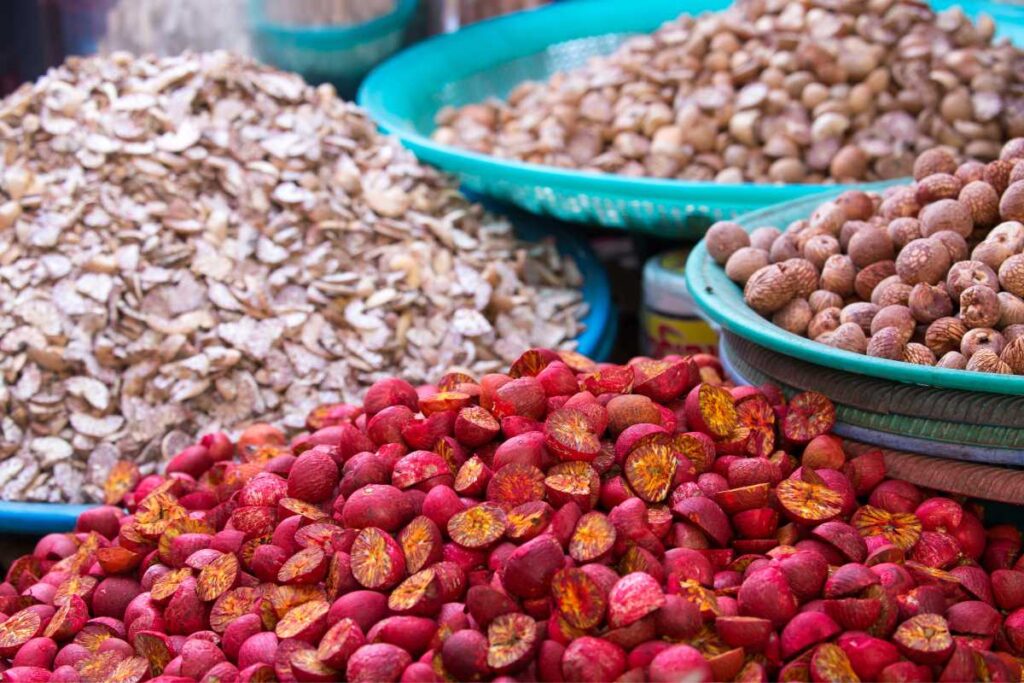
Betel nut in Indonesian folklore, rituals, and ceremonies
In the vibrant tapestry of Indonesian culture, betel nut holds a special place. It is intertwined with the country’s folklore, rituals, and ceremonies, adding a touch of tradition to everyday life. From generation to generation, stories have been passed down about the magical properties of this humble nut.
One such tale tells of a young couple deeply in love but separated by tragedy. The girl’s family disapproved of their relationship and banished her to a distant village. Heartbroken and determined to reunite with her beloved, she carried a betel nut with her at all times. Legend has it that the nut kept her safe on her arduous journey and granted her the strength to overcome any obstacle. Eventually, she reached her destination and was joyfully reunited with her partner.
Rituals involving betel nut are also prevalent throughout Indonesia. One such ritual is the “sirih pinang” ceremony, where betel nuts are offered as a symbol of respect and hospitality. This ancient custom is deeply ingrained in Indonesian society and signifies unity among individuals or communities. It serves as a gesture of goodwill when welcoming guests or during important occasions such as weddings or religious events.
Symbolism and social customs surrounding the betel nut tradition
The symbolism surrounding betel nuts extends beyond their mere physical presence. In Indonesian culture, they represent harmony, friendship, and prosperity. The act of offering betel nuts to someone signifies an invitation for friendship or reconciliation.
Social customs related to betel nuts are still observed in various parts of Indonesia today. For example, it is customary for hosts to present guests with a tray containing ingredients for chewing betel nuts: sliced areca palm fruit (pinang), slaked lime (kapur), gambier paste (kencur), cloves (cengkeh), tobacco leaves, and betel leaves. This communal activity fosters a sense of togetherness and camaraderie among those partaking in the tradition.
Moreover, the preparation and sharing of betel nut quids are seen as an opportunity for bonding and storytelling. As people gather around, they engage in lively conversations while carefully crafting their own personalized betel nut quid. This shared experience strengthens social connections and creates lasting memories.
Unveiling the cultural significance of betel nut in Indonesia
The cultural significance of betel nut in Indonesia cannot be overstated. It serves as a window into the rich tapestry of Indonesian traditions, offering insights into the values, beliefs, and customs that have shaped the nation’s identity.
Betel nuts are deeply rooted in Indonesian folklore, where they symbolize resilience, perseverance, and love. These stories serve as a reminder of the importance placed on determination and overcoming obstacles in Indonesian society.
Furthermore, rituals involving betel nuts reflect the country’s emphasis on hospitality and unity. The act of offering betel nuts to guests showcases Indonesians’ warm nature and their desire to foster meaningful connections with others.
The social customs surrounding betel nuts provide a platform for storytelling and bonding within communities. Through this shared experience, traditions are passed down from one generation to another, ensuring their preservation for years to come.
A window into Indonesian traditions: The role of betel nut
Betel nut plays a significant role in preserving Indonesian traditions. It acts as a cultural anchor that connects past generations with present ones. By embracing the symbolism behind this humble nut, Indonesians keep their heritage alive and vibrant.
The tales woven around betel nuts not only entertain but also educate younger generations about their roots. They instill values such as resilience, love, and unity while fostering an appreciation for their cultural heritage.
Through rituals involving betel nuts, Indonesians maintain strong bonds within their communities. These practices create a sense of belonging and reinforce the importance of hospitality and togetherness.
Betel nut traditions provide a unique lens through which to view Indonesian society. They serve as a testament to the country’s diverse cultural landscape, offering glimpses into the lives of its people and their unwavering commitment to preserving their customs.
Commercial Production and Trade

Overview of the thriving betel nut industry in Indonesia
Indonesia boasts a flourishing betel nut industry, with the country being one of the largest producers of this popular stimulant. The warm and humid climate provides ideal conditions for betel nut cultivation, making it a lucrative business for many growers across the archipelago. The industry has witnessed significant growth over the years, contributing to Indonesia’s economy and providing employment opportunities for countless individuals.
Market demand and export trends for Indonesian betel nuts
The market demand for Indonesian betel nuts has been steadily increasing both domestically and internationally. Locally, betel nuts are widely consumed as part of cultural traditions and social practices. However, it is the international market that presents exciting prospects for Indonesian producers. Countries such as India, China, Bangladesh, and Malaysia have shown a growing interest in importing betel nuts from Indonesia due to their superior quality and competitive pricing.
Indonesian exporters have capitalized on this demand by adhering to stringent export standards to ensure their products meet international requirements. This commitment has resulted in increased exports of Indonesian betel nuts to various parts of the world. As more countries discover the unique flavor profile and medicinal properties associated with these nuts, the demand is expected to continue rising.
Challenges faced by betel nut producers in a competitive market
While the betel nut industry in Indonesia flourishes, it is not without its challenges. One major obstacle faced by producers is intense competition from other countries that also cultivate betel nuts. These competitors often offer lower prices or have established strong footholds in certain markets, making it difficult for Indonesian growers to penetrate those areas.
Ensuring consistent quality while meeting export standards can be demanding for small-scale growers who may lack access to proper infrastructure or resources. Maintaining high-quality standards throughout production becomes crucial to remain competitive on an international level.
Seizing opportunities: The business side of Indonesian betel nuts
Amidst the challenges, there are ample opportunities for betel nut producers in Indonesia to thrive. By embracing innovative business strategies and leveraging technology, growers can enhance their productivity and efficiency. Collaborating with local governments and industry associations can also provide access to resources, training programs, and financial assistance.
Moreover, exploring niche markets that value sustainability and organic products could be a lucrative avenue for Indonesian betel nut producers. By highlighting the natural cultivation methods employed in Indonesia, growers can tap into this growing consumer trend and differentiate their products from competitors.
Processing Industries and Products
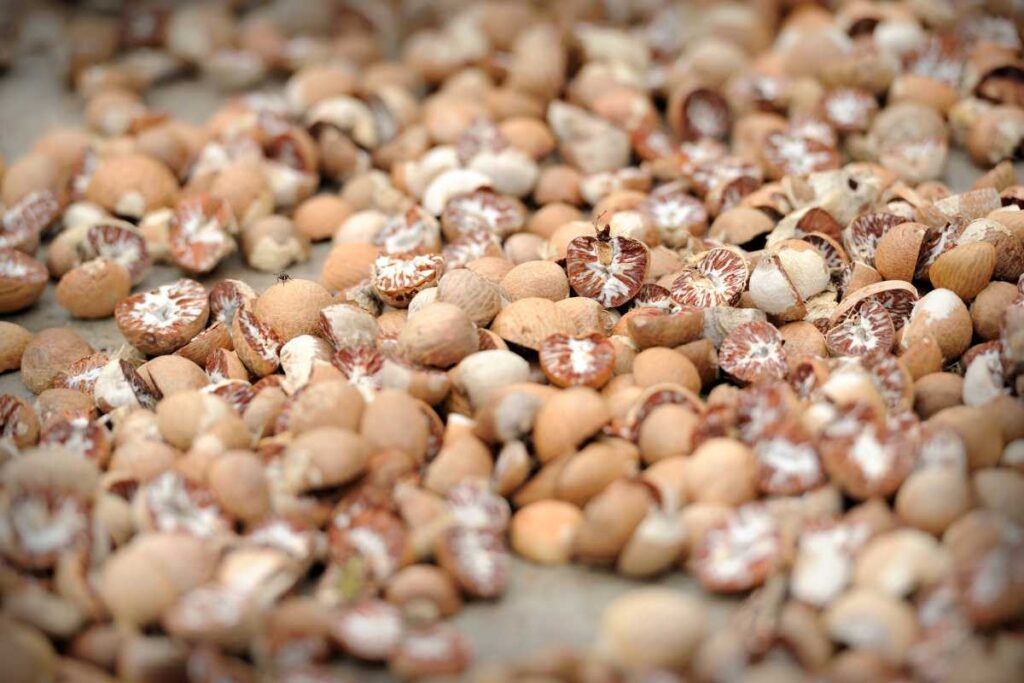
Exploring traditional and modern processing techniques for betel nuts in Indonesia
Betel nuts, a popular product from Indonesia, go through a fascinating process of transformation before they reach consumers. The country’s rich cultural heritage has influenced both traditional and modern processing techniques used to enhance the flavor and quality of these nuts.
In traditional processing methods, betel nuts are harvested from the Areca palm trees that thrive in various regions of Indonesia, including Sumatra Island and Jambi. Skilled workers carefully extract the nuts from their husks, ensuring minimal damage to the product. These raw betel nuts are then sun-dried to remove excess moisture and impurities.
Modern processing techniques have also emerged in recent years, leveraging advanced machinery to streamline production processes. This approach ensures consistent product quality while meeting the growing demand for Indonesian betel nut products. State-of-the-art machines help with tasks such as husking, drying, and sorting the nuts based on size and quality.
Value-added products derived from Indonesian betel nuts
Indonesia’s betel nut industry has witnessed significant growth due to its ability to offer value-added products derived from this versatile ingredient. Beyond its traditional use as a chewing stimulant or mouth freshener, betel nuts have found applications in various industries.
One notable application is the use of processed betel nuts as animal feed. Rich in nutrients, these nut-based products provide essential dietary supplements for livestock. Farmers across Indonesia rely on these feeds to ensure healthy growth and improved productivity among their animals.
The processed form of Indonesian betel nuts serves as a key ingredient in several consumer products. From snacks to beverages, manufacturers incorporate these flavorful pieces into their recipes for an authentic Indonesian touch. The unique taste profile of Indonesian betel nut adds depth to culinary creations while catering to consumers’ preference for premium-quality ingredients.
Innovations driving the growth of the Indonesian betelnut industry
Innovation plays a crucial role in propelling the Indonesian betel nut industry forward. Companies are continuously exploring new ways to unlock the potential of processed betel nuts, leading to exciting developments and increased market demand.
One area of innovation lies in the packaging of betel nut products. Manufacturers have introduced double jute bags that provide enhanced protection against moisture and external contaminants. This packaging solution ensures that the product remains fresh and maintains its premium quality during transportation.
Moreover, companies invest in research and development to reduce impurities in processed betel nuts further. By implementing advanced sorting techniques and employing dedicated staff, they can deliver a superior product with minimal impurity content. This commitment to quality has helped establish Indonesia as a reliable supplier of top-notch betel nut products worldwide.
Beyond chewing: Unlocking the potential of processed Indonesian betelnuts
While traditionally associated with chewing habits, processed Indonesian betel nuts have expanded their reach beyond this conventional use. Innovative entrepreneurs have harnessed the unique properties of these nuts to create an array of non-chewing products that cater to diverse consumer preferences.
For instance, companies now produce natural dyes derived from Indonesian betel nuts. These dyes find applications in textile industries, providing an eco-friendly alternative to synthetic coloring agents. The vibrant hues extracted from these nuts add a touch of authenticity while meeting sustainability goals.
Furthermore, cosmetic manufacturers recognize the beneficial properties of Indonesian betel nuts for skincare products. Rich in antioxidants and known for their antibacterial qualities, extracts from these nuts are incorporated into lotions, creams, and soaps. Consumers seeking natural skincare solutions appreciate these products’ effectiveness while supporting sustainable sourcing practices.
Traditional Preparation and Consumption

Tried-and-Tested Methods for Preparing Traditional Indonesian-style Chewable Betelnuts
Preparing betel nuts in the traditional Indonesian style is an art that has been passed down through generations. The process involves several steps to ensure the betel nuts are ready to be consumed.
-
Harvesting: The first step is to carefully select ripe betel nuts from the trees. Skilled harvesters can determine the maturity of the nut by its color, size, and texture.
-
Cleaning: Once harvested, the betel nuts need to be cleaned thoroughly. This is typically done by washing them with clean water and removing any dirt or debris.
-
Soaking: After cleaning, the betel nuts are soaked in water for a specific period of time to soften their outer shell. This soaking process helps make them easier to chew later on.
-
Peeling: Once soaked, the outer shell of the betel nut needs to be peeled off. This can be done using a knife or other sharp tool, taking care not to damage the inner part of the nut.
-
Slicing: After peeling, it’s common practice to slice the betel nut into smaller pieces for easier consumption. These slices are often thin and uniform in size.
-
Sun-drying: To preserve the freshness and flavor of the sliced betel nuts, they are sun-dried for a certain duration until they reach an optimal moisture level.
-
Storage: Finally, the dried slices are stored in airtight containers away from moisture and sunlight until they are ready to be used.
Pairings with Other Ingredients like Lime, Tobacco, or Leaves to Enhance Flavor
In traditional Indonesian culture, consuming betel nuts often involves pairing them with other ingredients that enhance their flavor and provide additional benefits.
-
Betel Leaves (Piper betle): One popular pairing is combining sliced betel nuts with fresh betel leaves. The leaves are known for their aromatic properties and can add a pleasant fragrance to the overall chewing experience.
-
Lime (Calcium hydroxide): Another common practice is to sprinkle lime powder onto the sliced betel nuts. Lime acts as a catalyst, releasing alkaloids present in the nut and intensifying its flavor.
-
Tobacco: In some regions, tobacco is added to the mixture of betel nut and lime. This combination creates a unique blend of flavors that is favored by many traditional consumers.
Diverse Regional Variations in Preparation & Consumption Practices across Indonesia
Indonesia is a vast archipelago consisting of diverse cultures and traditions, each with its own unique way of preparing and consuming betel nuts. Here are some notable regional variations:
-
Sumatra: In Sumatra, betel nut preparation often involves wrapping slices of the nut in betel leaves along with other ingredients like tobacco or cloves before chewing. This method is believed to create a more intense flavor profile.
-
Java: On the island of Java, betel nut consumption is often accompanied by coffee or tea drinking rituals. It’s customary for people to chew on betel nuts while sipping their favorite hot beverage.
-
Bali: In Bali, the tradition of consuming betel nuts has evolved into an art form called “makan sirih” or “sirih pinang.” Elaborate ceremonies involve presenting trays containing carefully arranged ingredients such as sliced betel nuts, lime paste, gambier extract, and various herbs.
-
Papua: Betel nut consumption in Papua takes on a ceremonial significance during social gatherings or important events. The process involves sharing prepared slices among participants as a symbol of unity and friendship.
A Taste of Tradition: Savoring Authentic Flavors Through Traditional Consumption
Indonesia’s rich cultural heritage can be experienced through the traditional preparation and consumption of betel nuts. By following tried-and-tested methods, incorporating complementary ingredients, and embracing regional variations, individuals can savor the authentic flavors and immerse themselves in the cultural significance of this age-old practice.
Betel nut consumption goes beyond mere indulgence; it is a way to connect with Indonesian traditions and appreciate the country’s diverse cultural tapestry. So, the next time you have the opportunity to try betel nuts from Indonesia, remember that each bite carries centuries of tradition and a taste of genuine heritage.
Modern Applications and Global Influence
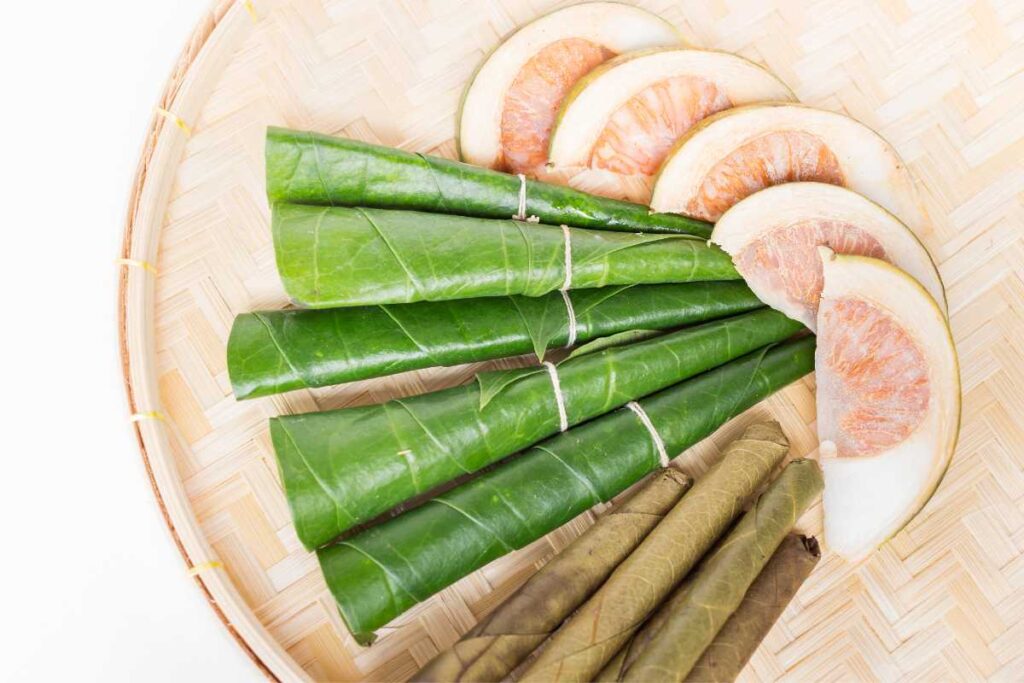
Betel nut in contemporary Indonesian cuisine
In the vibrant culinary landscape of Indonesia, betel nuts have found their place as a versatile ingredient that adds a unique flavor profile to traditional dishes. This once humble nut has now become a star player in modern Indonesian cuisine, captivating the taste buds of both locals and international food enthusiasts.
Indonesia’s rich cultural heritage and diverse regional cuisines have paved the way for the integration of betel nuts into various recipes. From savory dishes like rendang beef stew to spicy sambal condiments, betel nuts are used to enhance flavors and create an authentic Indonesian experience. Chefs across the country are experimenting with this indigenous ingredient, pushing boundaries and reinventing classic dishes with a contemporary twist.
One emerging trend is the fusion of Indonesian flavors with international cuisines. Chefs are blending traditional techniques and ingredients with global influences, resulting in innovative creations that showcase the versatility of betel nuts. For example, imagine biting into a mouthwatering pizza topped with spicy rendang sauce infused with the earthy notes of crushed betel nuts. This exciting fusion not only tantalizes taste buds but also showcases Indonesia’s culinary prowess on a global stage.
Emerging trends & fusion recipes featuring this versatile ingredient
The use of betel nuts extends beyond traditional cooking methods. In recent years, there has been a surge in demand for innovative products derived from this remarkable seed. Entrepreneurs have capitalized on its unique properties to create an array of modern applications that cater to diverse consumer preferences.
Betel nut oil extracted from roasted seeds is gaining popularity due to its aromatic qualities and potential health benefits. It is used as an ingredient in skincare products such as lotions, soaps, and hair oils, offering natural remedies for various skin conditions. This oil is finding its way into perfumes and aromatherapy blends due to its distinct fragrance.
Another fascinating application lies in the realm of biofuel. Researchers are exploring the potential of betel nut oil as an alternative energy source, harnessing its high energy content to power vehicles and machinery. This sustainable solution not only reduces dependence on fossil fuels but also contributes to a greener future.
Betelnut’s global impact on culinary cultures beyond Indonesia
While betel nuts have deep roots in Indonesian culture, their influence has transcended borders and made an indelible mark on culinary cultures worldwide. As Indonesian diaspora communities spread across the globe, they brought with them their beloved traditions and flavors, including the cherished betel nut.
In countries like Malaysia, Thailand, and India, where betel nuts are also grown and consumed, they play a significant role in local cuisines. From traditional snacks like miang kham in Thailand to mouth-refreshing paan in India, these countries have incorporated betel nuts into their culinary heritage.
Furthermore, as international travel becomes more accessible and people become increasingly curious about diverse gastronomic experiences, Indonesian cuisine has gained popularity globally. Restaurants featuring authentic Indonesian dishes can now be found in major cities around the world. This surge of interest not only introduces new palates to the delights of betel nuts but also fosters cultural exchange and appreciation.
Influencing palates worldwide: The expanding reach of Indonesian Betelnuts
Indonesia is a leading exporter of betel nuts globally, with production reaching millions of tons each year. Its strategic geographical location allows for efficient transportation through international ports to cater to demand from various countries.
Betel nuts from Indonesia have established themselves as a standard for quality and flavor in the global market. Their round shape, size consistency, and competitive pricing make them highly sought after by buyers from all over the world. Whether it’s for traditional use or innovative applications mentioned earlier, Indonesian betel nuts are meeting diverse customer requirements with aplomb.
The sun-kissed plantations scattered across the Indonesian archipelago yield an abundant harvest year after year. With advanced cultivation techniques and adherence to international standards, the country continues to solidify its position as a reliable supplier of betel nuts on a global scale.
Sustainability and Environmental Concerns

Impact of widespread cultivation on local ecosystems & biodiversity
The cultivation of betel nut in Indonesia has had a significant impact on local ecosystems and biodiversity. As the demand for betel nuts continues to rise, more land is being cleared for cultivation, leading to deforestation and habitat loss. This has resulted in the displacement of numerous plant and animal species that once thrived in these areas.
The clearing of forests not only disrupts the delicate balance of ecosystems but also contributes to soil erosion and degradation. The removal of trees and vegetation exposes the soil to erosion by wind and rain, leading to nutrient depletion and decreased fertility. This can have long-term consequences for the sustainability of betel nut cultivation as it relies heavily on healthy soils.
Furthermore, the expansion of betel nut plantations often involves the use of pesticides and chemical fertilizers, which can have detrimental effects on local water sources. Runoff from these chemicals can pollute rivers, streams, and groundwater, posing a threat to aquatic life as well as human health.
To mitigate these environmental impacts, sustainable practices within the industry are crucial.
Sustainable practices addressing environmental challenges within the industry
In recent years, there has been a growing recognition among betel nut farmers about the need for sustainable practices that minimize harm to the environment. These practices aim to strike a balance between meeting production demands while ensuring the long-term health of ecosystems.
One such practice is agroforestry, where betel nut trees are intercropped with other tree species. This approach helps mimic natural forest systems by promoting biodiversity and providing shade for betel nut trees. It also helps reduce soil erosion by improving soil structure through increased organic matter content.
Farmers are increasingly adopting organic farming methods that eliminate or minimize pesticide use. By relying on natural pest control methods such as crop rotation, biological controls like insects that prey on pests, or using organic fertilizers like compost, farmers can reduce the environmental impact of their cultivation practices.
Concerns over deforestation linked to increased demand for Betelnuts
The rising global demand for betel nuts has put immense pressure on Indonesia’s forests, leading to concerns over deforestation. As more land is cleared for betel nut plantations, valuable forest ecosystems are lost, along with their associated biodiversity and ecosystem services.
Deforestation not only contributes to climate change by releasing large amounts of carbon dioxide into the atmosphere but also disrupts the water cycle and exacerbates soil erosion. It is crucial to address these concerns and find sustainable solutions that balance the economic benefits of betel nut production with the need to protect forests and mitigate climate change.
Nurturing nature’s gift responsibly: Balancing conservation with production
To ensure a sustainable future for betel nut cultivation in Indonesia, it is essential to prioritize conservation efforts alongside production. This involves adopting practices that minimize environmental impact while maximizing productivity.
One approach is promoting reforestation initiatives that aim to restore degraded land and increase forest cover. By replanting native tree species in areas previously cleared for betel nut cultivation, we can help recreate habitats for wildlife, improve soil health, and enhance ecosystem resilience.
Furthermore, engaging local communities in sustainable management practices can contribute significantly to preserving biodiversity while supporting livelihoods. Encouraging farmers to adopt sustainable farming techniques through training programs and providing incentives can lead to positive outcomes both environmentally and economically.
Research and Scientific Studies

Latest scientific studies uncovering chemical composition & effects of Betelnuts
Researchers have been delving into the depths of betel nuts from Indonesia, unearthing valuable insights into their chemical composition and effects. These recent scientific studies have shed light on the intricate components that make up these nuts, providing a deeper understanding of their properties.
One key area of inquiry has been the quality of betel nuts. Scientists have analyzed different grades of Indonesian betel nuts to determine their chemical makeup and identify any variations in composition. Through meticulous analysis, they have discovered that the quality of betel nuts can vary based on factors such as growing conditions, soil type, and harvesting techniques. This research helps us understand how these variables influence the overall quality and characteristics of betel nuts.
Moreover, researchers have focused on exploring the potential health-related benefits or risks associated with consuming betel nuts. Various studies have examined the impact of betel nut consumption on oral health, cardiovascular health, and overall well-being. Findings indicate that while there may be certain cultural practices surrounding betel nut chewing, it is important to consider its potential negative effects on oral hygiene and cardiovascular health due to its stimulating properties.
Focus on health-related research & findings surrounding Indonesian Betelnuts
In recent years, attention has been directed towards investigating the specific health-related aspects associated with Indonesian betel nuts. Researchers are particularly interested in identifying compounds present in these nuts that may contribute to various health benefits or pose potential risks.
One area where significant progress has been made is exploring the relationship between betel nut consumption and oral health issues such as gum disease and oral cancer. Studies have revealed that certain chemicals found in Indonesian betel nuts can cause irritation to oral tissues when chewed regularly over an extended period. Furthermore, long-term use has been linked to an increased risk of developing oral cancer.
Researchers are examining how other factors such as additives and coloring purposes may impact the overall quality and safety of betel nuts. By analyzing different grades of betel nuts, they aim to determine the presence of any harmful substances that may be introduced during processing or preservation.
Promising prospects for future research and development in the field
The recent scientific studies on Indonesian betel nuts have opened up exciting possibilities for future research and development. With a deeper understanding of their chemical composition and effects, scientists can now explore potential applications in various fields.
One area with promising prospects is the development of safer alternatives to traditional betel nut chewing practices. Researchers are investigating ways to extract beneficial compounds from betel nuts while minimizing the harmful effects associated with chewing them directly. This could lead to innovative products that harness the potential health benefits without compromising oral hygiene or cardiovascular well-being.
Furthermore, there is an opportunity for further exploration into sustainable cultivation methods for betel nut production. By studying optimal growing conditions and implementing responsible farming practices, researchers can contribute to improved quality control and ensure a regular volume of high-grade Indonesian betel nuts.
Legal and Regulatory Considerations

Current regulations and policies governing betel nut in Indonesia
Indonesia has implemented specific regulations and policies to govern the production, sale, and consumption of betel nut within its borders. These measures aim to ensure the safety of consumers while also addressing potential health risks associated with this popular stimulant.
The Indonesian government has set requirements for betel nut producers, including specifications regarding cultivation, processing, packaging, and labeling. These requirements are designed to guarantee that betel nuts meet certain quality standards before they are made available for sale. By enforcing these regulations, the authorities can protect consumers from substandard or contaminated products that may pose health hazards.
Moreover, the government has also established guidelines on the distribution and marketing of betel nut products. This includes restrictions on advertising practices to prevent misleading claims or targeting vulnerable populations such as children or pregnant women. By regulating these aspects of the industry, Indonesia aims to strike a balance between supporting the local economy and safeguarding public health.
International trade regulations impacting the betel nut industry
In addition to domestic regulations, international trade regulations play a significant role in shaping the betel nut industry in Indonesia. The country’s participation in global trade requires compliance with various agreements and restrictions imposed by international bodies.
For instance, Indonesia must adhere to guidelines set by organizations like the World Trade Organization (WTO) when exporting or importing betel nuts. These guidelines aim to promote fair trade practices while ensuring consumer protection across borders. Compliance with these regulations helps maintain a level playing field among participating countries and fosters trust in international trade relationships.
Furthermore, specific countries may have their own import requirements for agricultural products like betel nuts. Exporters from Indonesia must navigate these rules diligently to meet foreign market demands without violating any legal provisions. Understanding these international trade regulations is crucial for Indonesian exporters seeking opportunities in global markets.
Mandated health warnings and consumer protection measures for betel nut products
To safeguard public health, Indonesian authorities have implemented mandated health warnings and consumer protection measures for betel nut products. These measures aim to educate consumers about the potential risks associated with betel nut consumption and promote responsible use.
Betel nut packages must prominently display health warnings detailing the adverse effects of excessive consumption, such as oral diseases, addiction, and potential carcinogenic properties. These warnings serve as a reminder to consumers to exercise caution when using betel nuts and encourage them to make informed choices.
Consumer protection measures ensure that betel nut products comply with safety standards. This includes regular inspections by regulatory bodies to monitor product quality and prevent the sale of contaminated or adulterated goods. By enforcing these measures, Indonesian authorities strive to protect consumers from harm while maintaining the integrity of the betel nut industry.
Navigating legal frameworks: The rules surrounding Indonesian betel nuts
Navigating the legal frameworks surrounding Indonesian betel nuts can be complex due to the various requirements and specifications set forth by domestic and international regulations. To ensure compliance, producers and traders must familiarize themselves with these rules and actively engage in ongoing education regarding any updates or changes.
Producers should pay close attention to cultivation practices, ensuring they adhere to guidelines related to pesticide usage, harvesting methods, and post-harvest handling. Compliance with these requirements not only ensures product quality but also contributes to environmental sustainability.
Furthermore, packaging and labeling regulations demand accurate information regarding ingredients, nutritional content (if applicable), expiration dates, and proper storage instructions. Meeting these specifications helps build consumer trust while minimizing the risk of non-compliance penalties.
Cultural Preservation and Promotion
The cultural preservation and promotion of betel nut practices in Indonesia is crucial for maintaining the rich heritage associated with this traditional practice. Efforts are being made to ensure that the knowledge and customs surrounding betel nut cultivation, preparation, and consumption are passed down through generations.
Cultural tourism plays a significant role in promoting the betel nut heritage of Indonesia. Visitors have the opportunity to experience firsthand the traditional practices associated with betel nut, such as witnessing the cultivation process or participating in preparation rituals. This not only helps preserve these customs but also generates interest and appreciation for Indonesian culture.
Collaborations between different stakeholders, including government bodies, local communities, and non-profit organizations, are essential for sustainable cultural preservation. These partnerships can support initiatives aimed at preserving traditional practices by providing resources, funding research projects, or organizing events that showcase the significance of betel nut in Indonesian culture.
In conclusion, efforts to preserve and promote the cultural heritage of betel nut practices in Indonesia are vital for ensuring their survival. Through cultural tourism, collaborations among various stakeholders, and sustainable initiatives, we can continue to celebrate and pass on this unique aspect of Indonesian culture to future generations.
Betel Nut from Indonesia | FAQs
1. How long has betel nut been used in Indonesia?
Betel nut has a long history in Indonesia, with ancient usage dating back centuries. It has been an integral part of traditional practices and cultural rituals throughout Indonesian society.
2. What are some health benefits associated with consuming betel nuts?
While betel nuts have traditionally been consumed for their stimulating effects and cultural significance rather than health benefits per se, they do contain certain nutrients such as vitamins and minerals. However, it’s important to note that excessive consumption or prolonged use may pose health risks.
3. Are there different varieties of betel nuts found in Indonesia?
Yes, there are several varieties of betel nuts found in Indonesia. Each variety has its own distinct characteristics and flavors, contributing to the diversity of betel nut consumption in different regions.
4. How is betel nut prepared and consumed traditionally?
Traditionally, betel nuts are prepared by slicing them into small pieces and then chewing them with other ingredients such as betel leaves, lime, or tobacco. The preparation and consumption methods may vary across different regions of Indonesia.
5. Is the betel nut industry in Indonesia sustainable?
The sustainability of the betel nut industry in Indonesia is a concern due to its potential impact on the environment. Efforts are being made to promote sustainable cultivation practices and address social and ecological challenges associated with its production.
6. Can I find betel nut-based products in Indonesia?
Yes, there are various betel nut-based products available in Indonesia. These range from traditional preparations like powders or pastes to modern innovations such as flavored candies or beverages.
7. Are there any legal regulations regarding betel nut in Indonesia?
Yes, there are regulations surrounding the production, trade, and consumption of betel nuts in Indonesia. These regulations aim to ensure consumer protection and address any potential health risks associated with their use.
